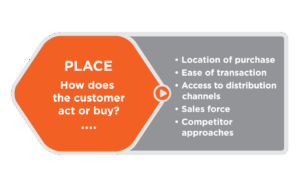Welcome to the world of helzberg jewelry sale, where elegance meets affordability. If you’re in search of exquisite pieces that won’t break the bank, you’ve come to the right place. From sparkling diamonds to stunning gold accessories, the helzberg jewelry sale offers a variety of options to elevate your style and make any occasion memorable.
This sale is not just about great prices; it’s an opportunity to find that perfect gift for a loved one or treat yourself to something special. With a reputation for quality and craftsmanship, Helzberg’s selection caters to every taste, ensuring that you can find something that resonates with your personal style.
Effective communication is a crucial skill in both personal and professional settings. It is not merely about exchanging information; it is also about understanding the emotion and intentions behind the information. It is essential for building relationships, fostering collaboration, and ensuring clarity in interactions. In this article, we will explore the various elements that contribute to effective communication, the barriers that can hinder it, and practical strategies to enhance our communication skills.
Understanding Communication
Communication is a multi-faceted process that involves sending and receiving messages. It encompasses verbal and non-verbal cues, tone, body language, and even written words. To communicate effectively, one must be aware of these elements and how they contribute to the overall message.
Verbal communication includes the words we choose and how we articulate them. It is essential to select words that are appropriate for the audience and context. Non-verbal communication, on the other hand, can convey a wealth of information without uttering a single word. Body language, facial expressions, and gestures can all impact how a message is received.
The Importance of Active Listening
One of the cornerstones of effective communication is active listening. This means fully concentrating on what is being said rather than just passively hearing the message. Active listening involves providing feedback, asking questions, and reflecting on what the speaker has conveyed.
When we listen actively, we demonstrate respect for the speaker, which can foster a more open and honest dialogue. It allows us to understand their perspective and engage in meaningful conversations. This practice not only improves our understanding but also builds trust and rapport.
Non-Verbal Communication: The Silent Speaker
Non-verbal communication can sometimes speak louder than words. It includes facial expressions, posture, eye contact, and even the physical distance between communicators. For example, maintaining eye contact can convey confidence and honesty, while crossed arms may suggest defensiveness.
Understanding and interpreting non-verbal cues can enhance communication effectiveness. It is essential to be aware of your own body language and how it may be perceived by others. Likewise, being able to read others’ non-verbal signals can provide deeper insights into their emotions and attitudes.
Barriers to Effective Communication
Despite our best intentions, several barriers can impede effective communication. Some of these barriers include:
- Language Differences: Language barriers can arise in multicultural environments, where individuals may have different levels of proficiency in a common language.
- Emotional Barriers: Personal emotions such as anger, frustration, or anxiety can cloud judgment and hinder effective communication.
- Physical Barriers: Noise and distance can lead to miscommunication or hinder the ability to convey a message clearly.
- Perceptual Barriers: Different perceptions and interpretations of a message can lead to misunderstandings.
Recognizing these barriers is the first step toward mitigating their impact. By being mindful of them, we can adapt our communication style to suit the situation and the audience.
Strategies for Enhancing Communication Skills
Improving communication skills is a continuous process. Here are several strategies that can help:
1. Be Clear and Concise
When conveying a message, strive for clarity and brevity. Avoid jargon or overly complex language that might confuse the audience. Aim to be direct and to the point, while still being polite and respectful.
2. Adapt to Your Audience
Understanding your audience is key to effective communication. Tailor your message to their level of understanding and interest. This may involve simplifying complex ideas or providing more context where necessary.
3. Practice Empathy
Empathy is the ability to understand and share the feelings of another. By practicing empathy, you can connect with others on a deeper level and respond to their needs more effectively. Try to put yourself in the other person’s shoes and consider their perspective.
4. Provide Constructive Feedback
Feedback is a vital part of communication, whether in personal relationships or professional settings. When providing feedback, aim to be constructive rather than critical. Focus on specific behaviors and suggest ways to improve.
5. Use Technology Wisely
In today’s digital age, technology plays a significant role in communication. While tools like email, instant messaging, and video conferencing can facilitate communication, they can also lead to misunderstandings. Be mindful of tone and clarity when communicating electronically.
Conclusion
Effective communication is an art that requires practice and mindfulness. By understanding the various elements of communication, actively listening, and employing strategies to enhance our skills, we can bridge gaps and foster meaningful connections with others. Whether in personal relationships or the workplace, the ability to communicate effectively is a valuable asset that can lead to success and fulfillment.
As we strive to improve our communication abilities, let us remember that it is not just about the words we say but also about how we make others feel in the process. By prioritizing empathy, clarity, and active listening, we can create a culture of open dialogue and understanding.
FAQ Explained
What types of jewelry are included in the sale?
The sale includes a wide range of items such as engagement rings, necklaces, bracelets, and earrings.
How often does the helzberg jewelry sale occur?
The sale typically occurs several times a year, often during holiday seasons and special events.
Are there any online exclusive deals available?
Yes, there are often online exclusive deals that can provide additional discounts or special offers.
Can I return items purchased during the sale?
Yes, items purchased during the sale usually follow the standard return policy, allowing for exchanges or returns within a specified time frame.
Is financing available for purchases made during the sale?
Yes, Helzberg often offers financing options during sales to help make purchasing easier.






















